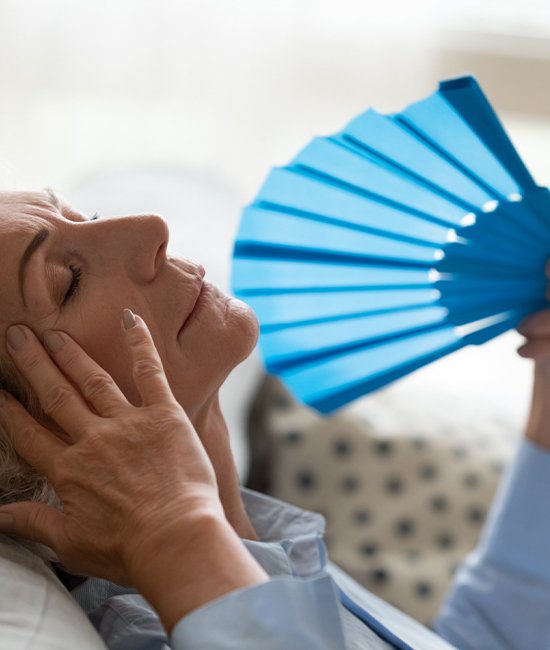What causes hot flashes during menopause?
 The main cause of hot flashes in menopause is hormonal changes in the body. In particular, the decrease in estrogen levels affects the hypothalamus, the temperature regulating center in the brain.
The main cause of hot flashes in menopause is hormonal changes in the body. In particular, the decrease in estrogen levels affects the hypothalamus, the temperature regulating center in the brain.
The hypothalamus is like a thermostat that regulates body temperature.
When estrogen levels drop, the hypothalamus may falsely perceive that the body is overheating and therefore activates various mechanisms to lower body temperature. These mechanisms are:
1. Vasodilation: The hypothalamus causes blood vessels near the skin surface to dilate (vasodilation). This increases blood flow to release heat through the skin, leading to a feeling of warmth.
2. Sweating: At the same time, the hypothalamus activates the sweat glands and sweating begins. Sweating helps the body to remove excess heat.
This process manifests itself as a sudden and intense feeling of warmth, usually felt on the face, neck and chest. Hot flashes can last from a few seconds to several minutes and are often accompanied by night sweats.
The severity and frequency of hot flashes varies from woman to woman and these symptoms can last for several years. For some women, hot flashes are mild and rare, while for others they affect daily life and social life.
Treatment of hot flashes includes hormone replacement therapy (HRT), lifestyle changes (e.g. staying cool, dressing in layers, avoiding stress) and in some cases medication. In addition, alternative treatment methods can be tried with herbal estrogens such as soy products and flaxseed.